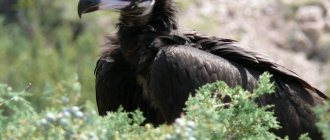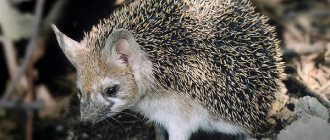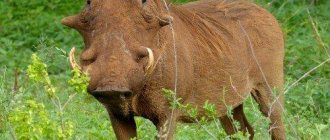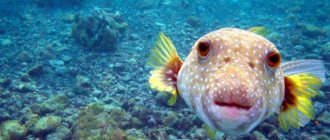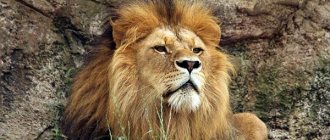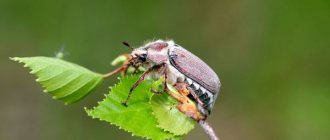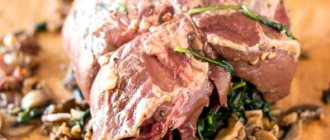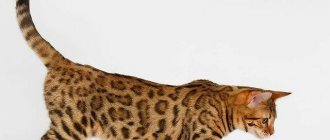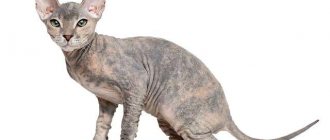- Wild animals
- >>
- Birds
The vulture is the largest predator that floats in the air. When many people mention this bird, they get a feeling of hostility, because the vulture’s menu consists of carrion. In various cartoons, this feathered predator also always plays a negative image. Let's try to study the habits, disposition and lifestyle features of this interesting bird and, perhaps, it will reveal many positive aspects.
Origin of the species and description
Photo: Grif
Vultures have another name - vultures; they are feathered predators of the hawk family, loving places with a warm climate. They should not be confused with American vultures, although they are similar in appearance, they are not close relatives. Hawk vultures are related to vultures, while American vultures are closer to condors.
Since ancient times, vultures have been considered totemic creatures with special amazing properties. When you look at the vulture, you immediately feel his keen, intelligent, purposeful gaze. There are fifteen known varieties of vulture, which differ not only in their place of residence, but in some external characteristics; we will describe some of them.
Video: Vulture
The Bengal vulture is quite large in size, its plumage is dark, sometimes completely black. Light spots appear in the tail area and on the wings. The bird's neck is decorated with a feather rim resembling a frill. The places of its permanent deployment are countries such as Afghanistan, Vietnam and India. This vulture does not shy away from people and can live near their settlements, favoring plains and various lowlands.
The African vulture has an overall light beige tone of plumage, on which dark brown shades appear. The predator's neck is equipped with a white collar, and the bird's dimensions are small. It is not difficult to guess that this vulture has a permanent residence on the African continent, where it prefers hills and foothills, living at an altitude of about 1.5 km.
The griffon vulture is very large, its wings are wide. The color of the feathers is brownish in places with red. The wings stand out because they are darker in color. The small head of the vulture is covered with light (almost white) fluff, against which the hook-shaped powerful beak is clearly visible. Inhabits the mountain ranges of southern Europe, Asian steppes, and African semi-deserts. Can settle at an altitude of more than 3 km.
The Cape vulture is considered endemic to the southwestern part of South Africa, where it settled in the rocky terrain of the Cape region, after which it is named. The bird is very heavy, its weight can reach 12 kg or more. The color of the vulture is silver with a red breast and wings, the ends of which have a black tint.
The snowy (Himalayan) vulture always likes to be at a height, so it settles in the mountain ranges of Tibet, the Himalayas and the Pamirs; it is not at all afraid of a height of 5 km. Its large size is simply amazing. The wingspan of this vulture reaches a length of 3 m. A large collar of feathers adorns the neck of the vulture, the color of which is light beige, while the young have darker shades.
The Indian vulture is of medium size and brownish in color, the wings are dark chocolate brown, and the “harem pants” on the legs are light. The bird is considered endangered and can be found in Pakistan and India.
Rüppel's vulture is named after the zoologist Eduard Rüppel. This bird is small in size and weighs about 5 kg. Light shades color the head, chest and neck, and the wings have an almost black tone. The inside of the wings, collar and area around the tail are white. The bird inhabits the African continent.
The black vulture is very large in size, its body reaches a length of up to 1.2 m, and its wingspan is 3 m. The young of this species of vulture are completely black, and adults are brown. The bird's head is downy, and there is a feather frill on the neck. This vulture lives in our country, and among all the birds living in Russia, it is the most powerful.
Vulture bird: description
Vultures (vultures) represent several species belonging to the Accipiterae family. They are also called birds of the Old World. Although they resemble the American vultures of the New World, they are not considered related. Black vultures, which are also in the same family as vultures, represent a separate genus.
Vulture - interesting facts
Appearance
Vultures are not at all difficult to distinguish from other birds by appearance, since they are noticeably distinguished by their head and neck, completely devoid of plumage, as well as a relatively large beak in the form of a hook, and the same huge paws armed with sharp claws. With the help of a sharp and strong beak, these birds tear up carrion on the spot, while their fingers are rather weak to carry large prey to another place. Experts regard the absence of feathers on the neck and head as a kind of hygiene attribute, which allows them to practically not get dirty in the process of eating prey. At the base of the neck there is a kind of ring of feathers that holds the flowing blood, preventing it from reaching the rest of the body.
Interesting to know! All hyphae have quite capacious stomachs and crops, so they can eat up to 5 kg of meat in one meal.
The main color of these birds cannot be called flashy, since the colors consist of black, gray, brown and white tones. The main color of both males and females does not allow their gender to be determined visually, as well as by other external signs. Adults have a slightly lighter base color. All species mainly differ in size, since depending on the species, vultures grow in length from 0.8 meters to 1.2 meters, and their weight ranges from 4 to 12 kilograms. Vultures are characterized by the presence of a short, rounded tail, as well as the presence of large, wide wings with a span of 2 and a half times the length of their body.
Character and lifestyle
Vultures prefer to lead a sedentary lifestyle, without carrying out seasonal migrations, and can live separately or in pairs. They try to stick to their territory, but if carrion appears on a neighbor’s territory, they will not miss this moment. The larger the prey, the more vultures cut it up, while they practically do not fight for their lunch, only occasionally driving away their relatives with flapping wings. This lack of conflict is characteristic of vultures. Their calmness and calmness help them track prey on the ground, when at the same time they have to hover in the air for hours, tracking the territory.
Interesting moment! Vultures are considered excellent flyers, capable of moving at speeds of up to 65 km/h in horizontal flight, and also in diving conditions – up to 120 km/h. Somehow, at an altitude of about 11 and a half thousand meters, an African vulture crashed into a passenger airliner, which indicates the high flight characteristics of vultures.
Despite the fact that vultures are excellent flyers, it is not easy for them to get off the ground, especially after a hearty lunch. If in this case it is not possible to take off, then the vulture has to get rid of excess weight by regurgitating excess food in flight. When the bird is at the desired height, the vulture retracts its neck and spreads its primary wings wide, while it flaps occasionally. Basically, these birds use rising air currents, soaring in the air for several hours, without wasting energy on flapping flight.
Having descended to the ground, vultures cannot be called sedentary birds: they move along the ground quite briskly. After a hearty meal, the birds begin to preen their feathers and also drink a lot of water. If possible, they swim and then begin to sunbathe, sitting on vegetation or on rocks. In this way they get rid of various pests. When on vacation or when they see prey, these birds make croaking sounds, although they do this quite rarely. Griffon vultures are considered the most “talkative” among their family.
How long do vultures live?
These predators live a relatively long time, living in any conditions. Their lifespan is at least half a century. There is a known story when a griffon vulture became friends with an old dog that lived with a butcher. By the way, the vulture also lived with this butcher. At one point, the dog died and the owner gave his body to be torn to pieces by the vulture. But he, even hungry, did not touch the corpse of his friend. The vulture became sad and also died of hunger on the eighth day.
Types of vultures
The genus of vultures “Gyps” includes 8 species:
- African vultures.
- Bengal vultures.
- Griffon vulture.
- Indian vulture.
- Cape vultures.
- Rüppell's vultures.
- Snow vultures.
- The species "Gyps tenuirostris", which was previously considered one of the subspecies of the Indian vulture.
Where do vultures live?
Each of the presented species prefers not to leave the boundaries of its habitat, choosing for its life activities open spaces that are accessible to visual control from the air. As a rule, vultures settle within savannas, deserts, and mountain slopes. African vultures are found in lowland areas, in savannah conditions, in open forests located in the south of the Sahara, as well as in shrub vegetation, in swampy areas, in forest zones of various bodies of water. One of the species (Gyps tenuirostris) lives in countries such as India, Bangladesh, Nepal, Myanmar and Cambodia. The Himalayan vulture prefers to live high in the mountains of Central and Central Asia, nesting at altitudes from 2 to 5 thousand meters above sea level.
In the vastness of South Asia, as well as in parts of Southeast Asia, Bengal vultures are found. They can settle close to humans, including large cities, since here they do not feel a lack of food supply.
Indian vultures have a greater preference for the western regions of India and southeastern Pakistan. Cape vultures build their nests within the African continent. It should be noted that Rüppel's vulture also lives in the vastness of Africa, but nests in the north and east of this continent.
The griffon vulture is an inhabitant of the arid territories of North Africa, Asia and the southern expanses of Europe. It is also found in the Crimea and the Caucasus, forming isolated populations. In the 19th century, these birds covered the distance from Crimea to Sivash. Nowadays, these birds can be found within the Kerch Peninsula, or rather in the Karadag and Black Sea Nature Reserves, as well as in the areas of the cities of Bakhchisarai, Belogorsk and Simferopol.
What does a vulture eat?
These birds feed mainly on carrion. They look out for motionless animal carcasses from above and then dive down. Vultures differ from New World vultures in that they have fairly acute vision, while vultures have a developed sense of smell.
The vulture menu consists of dead animals, both large ungulates and smaller animals. Their diet consists of:
- From mountain sheep and goats.
- Of elephants and crocodiles.
- From wildebeest and llamas.
- From various predatory animals.
- From fish and turtles.
- From bird eggs.
- From various insects.
In mountainous areas or desert conditions, these birds inspect the territory from above. At the same time, they either look for a suitable victim, or accompany terrestrial predators that go hunting. When predators catch prey, vultures simply wait for the full-fed predators to leave the eating area. Barn owls are in no hurry to start eating until they are convinced that the animal is completely dead.
Important point! There is an opinion that vultures can finish off their prey, which shows signs of life. In fact, this is just speculation, since vultures will never eat “live” food.
Vultures have a fairly sharp beak that can easily pierce the flesh of a dead animal. Vultures eat quite greedily and quickly, swallowing large fragments of carrion whole. A flock of one dozen of these birds leaves one skeleton of a large antelope in a matter of minutes. Quite often, vultures representing several species gather for one large prey, since their diets are not much different.
Despite this, some species prefer soft flesh, while others prefer hard food. In addition, smaller species are not able to cope with large prey, so they have no choice but to wait for the arrival of their larger relatives. Their gastric juice is so strong in composition that it copes not only with cadaveric poison, but also with a mass of bacteria and viruses that inevitably multiply in cadaveric conditions. Experts say. That vultures can starve for a long time.
Reproduction and offspring
Vultures are monogamous birds, so they choose to mate once and for life. It should be noted that these birds are not highly fertile, so the female lays eggs once a year, or even every two years.
Barn owls, which live in temperate latitudes, begin the breeding process in early spring. During this period, the male tries to demonstrate aerobatics to his chosen one. After a successful flight demonstration, after some time, one or two (very rarely) whitish eggs interspersed with brown tones appear in the nest. Vultures build their nests on a hill (on a tree or on a rock), which looks like a pile of branches of varying thickness. The inside is lined with dry grass.
Interesting moment! The process of incubating the eggs takes almost two months, with both parents incubating the eggs alternately. While one of the parents is sitting on the eggs, the second parent is looking for food for itself. When parents change, they turn the eggs, doing it quite carefully.
The offspring that are born are covered with white down, which falls out after one month. In its place, new fluff grows, ocher-white. The chicks receive food in the form of semi-digested food, which is regurgitated by the parents. After 3-4 months, the chicks begin to fly, but still do not refuse the help of their parents. Chicks become completely independent at the age of 6 months, and their readiness for reproduction occurs only at 4-7 years of life.
Natural enemies
Although vultures have natural enemies, there are very few of them and they are represented by birds of prey, as well as terrestrial predators in the form of jackals and spotted hyenas, which are their food competitors. It should be noted that vultures can fend for themselves, defending themselves with the flapping of their powerful wings. In addition to wings, vultures, if necessary, use their sharp and powerful beaks. We can safely say that it is not easy for attackers on vultures and they mostly retreat.
Appearance and features
Photo: Bird vulture
The appearance of vultures is quite extraordinary; their plumage is unevenly distributed. The head and neck have no feathers, but the body is powerful and covered with thick feathers. The massive hook-beak of vultures is visible from afar, and large claws stand out menacingly on their paws. Although the claws are impressive, the predator’s paws cannot drag its prey or grab it directly from the air, because the bird’s fingers are not strong. A large beak is necessary to easily tear off pieces of flesh during a meal.
The bare head and neck are provided by nature for the purpose of hygiene. A necklace of feathers around the neck serves the same function. It lies in the fact that during a meal, corpse fluid and blood easily flow down the bare neck, reaching the protruding collar, along which it completely leaves the bird’s body. This way it remains completely clean.
Interesting fact: The large volume of the stomach and crop allows vultures to eat about five kilograms of carrion in one meal.
The color of vultures is no different in brightness and attractiveness; calm, discreet shades predominate in their plumage.
They can be:
- black;
- brownish;
- white;
- brown;
- gray.
Both in color and in other external characteristics, the female and male look identical, and their sizes are also approximately the same. But young vultures always have darker, more saturated shades in contrast to mature individuals. The dimensions of different varieties vary significantly. The smallest birds reach a length of up to 85 cm and weigh about five kilograms, and the largest ones are more than a meter long and weigh 12 kg. It should be noted that the wings of vultures are very extensive and powerful, their span compared to the length of the bird itself is two and a half times greater. But the tail of the vulture is short and slightly rounded.
Black vulture in the Red Book
The black vulture has a status of 1A “Critical Condition”. Included in the Red Book of the Russian Federation as the third category of “Rare Birds”.
Main cause of extinction
The main cause of extinction is human activity, destroying the usual habitat of birds and animals, which leads to a reduction in biodiversity in nature.
In addition, birds are dying out due to:
- deterioration of the food supply;
- reduction in the number of wild animals;
- reducing the number of large domestic animals;
- birds getting caught in traps;
- hunting shooting.
Current population situation
The black vulture population is declining. Europe has up to 800 pairs of birds. No more than 100 pairs nest in Russia. On the Black Sea coast, from 2 to 6 pairs were recorded.
There are a small number of single birds, and groups of up to 7 individuals are found. Nesting is irregular and depends on the food supply.
What measures are being taken to protect
To save the view you must:
- Identification of nesting sites of the black vulture and giving them the status of a natural monument.
- Creation of special feeding areas in the nesting area.
- A ban on the use of traps when catching wolves from baits in places where birds constantly live.
Where does the vulture live?
Photo: Vulture animal
The vulture is a heat-loving bird, so it lives in countries with hot and temperate climates. It can be found on almost every continent, with the exception of Antarctica and Australia. The geography of vulture settlement is quite extensive, it covers the following zones:
- Southern Europe (including the Crimean peninsula);
- Central and South Asia;
- Caucasus;
- Africa (almost all);
- Southern North America;
- South America (all).
It should be noted that the largest number of vultures of various varieties live in Africa. Each species of vulture occupies one continent; among these birds there are not the same species living in different parts of the world.
Vultures love open areas where the expanses are perfectly visible from a height, making it easier to detect prey. These bird predators live in savannas, semi-deserts, deserts, and prefer mountain ranges, where they settle on steep slopes. Vultures are not migratory birds (only the turkey vulture is considered nomadic); they live sedentary, occupying one territory. During hunting forays, birds constantly violate the boundaries of their territory, whatever they can do in order to search for food.
Vultures are quite large, so their nests match them - large and very durable. They set them up in secluded places, in the middle of nowhere.
It can be:
- steep mountain slopes;
- grottoes hidden from the wind and bad weather;
- steep, inaccessible cliffs;
- wild, impenetrable forests.
Vultures also live in wetlands, sparse forests, and near rivers. These birds live either alone or in pairs that form for life.
Vulture breeding
Vultures reach sexual maturity at approximately 6 years of age. These birds are exclusively monogamous, and the male pays attention to only one female, and the chicks are raised by both partners.
The mating season begins in January and lasts until July. At this time, the male cares for the female, pays increased attention to her, and performs courtship dances on the ground and in the air. The male and female can run after each other, take off and circle when landing. Birds are especially active in such games in March and April.
To lay eggs, vultures choose a place at a height of several meters from the ground. Often, this is a hollow or crevice in a fallen tree or a dried stump. Vultures also nest in secluded places, covered with a rich layer of vegetation, under large stones or even on the edge of a cliff. Many species are not afraid to nest near human habitation, for example, in crevices of houses or agricultural buildings.
Vultures do not build nests themselves, but try to find the most suitable place for these purposes, which the pair then uses for many years.
In one clutch, the female has from 1 to 3 eggs, most often 2. The eggs hatch for several weeks. Parents feed newborn chicks for 2-3 months, bringing them food in their large crop.
At the age of two months, the vulture chicks are fully feathered.
The lifespan of vultures reaches 40 years. In captivity, cases have been recorded where the bird lived to be 50 years old.
What does a vulture eat?
Photo: Carrion vulture
Many are perplexed why such large and predatory birds give their preference to carrion? It's all about the structure of the vultures' stomach, which is capable of digesting only carrion, even fairly decomposed ones. The acidity of the gastric juice in vultures is so high that it easily copes with the products of decomposition; even the bones in the womb of the vulture are digested without problems.
Interesting fact: The original composition of bacteria found in the intestines of the vulture can break down various dangerous toxins that can be harmful to other animals.
Long-gliding vultures look down on prey, because their vision is very sharp. When it is detected, the birds quickly dive down. For the most part, vultures eat the carrion of ungulates, but their menu also includes other carrion.
The diet of vultures consists of dead:
- llamas and wildebeests;
- mountain goats and sheep;
- crocodiles and elephants;
- turtles (usually newborns) and fish;
- predatory mammals;
- all kinds of insects;
- bird eggs.
Vultures often accompany hunting predators; they are very patient and wait until the animal is full before eating the remains of the prey. Barn owls have nowhere to rush, and they can wait a long time for the death of a wounded animal, so that later they can arrange a real feast.
Interesting fact: The vulture will never attack a victim that shows even the slightest signs of life. He will not finish her off to hasten her demise. His weapon is anticipation, which he skillfully uses.
Vultures dine in whole flocks (up to 10 birds), while eating they do not click their beaks in vain and can greedily gnaw at a large antelope in 20 minutes. Usually, the vulture rips open the victim's belly with its hook-beak and begins to eat, thrusting its head directly into the flesh. Reaching the intestines, the bird pulls them out, tears them into pieces and swallows them. Of course, this is not a pleasant sight, comparable to some horror film.
Often, several species of vultures gather to taste the same prey. This is due to the fact that they prefer different parts of the dead carcass. Some eat pulp and offal, others like to feast on tendons, bone and cartilage tissue, and skin. Small varieties of vulture cannot overcome the thick-skinned carcass of an elephant, so they wait for larger relatives to gut it. When things are really bad with food, vultures can go without food for a long time.
Lifestyle and habitat
The massive distribution of birds is typical for all continents except Australia and Antarctica. Most vultures are found in Africa. Birds are attracted to open landscapes - large spaces, mountain slopes, sparse forests with bodies of water nearby.
The bird of prey, the vulture , flies beautifully and soars high. A case of a tragic encounter between an African vulture and a flying plane at an altitude of 11.3 km was recorded. The flight speed of the bar is up to 60 km/h, and the rapid dive down is twice as fast. Predators run quickly on the ground. For sanitary purposes, they often sit on branches, spreading their wings under the sun's rays.
Birds of different species live in permanent parts of their range. The answer to the question whether the vulture is a migratory or wintering bird is sedentary. Occasionally, predators invade other people's territories in search of food. I live alone, sometimes in pairs.
The character of vultures is calm and reserved. Their inherent daily activity is associated with their feeding feature - typical scavengers serve as orderlies, destroying the corpses of animals. They are not interested in wildlife, so vultures do not pose any threat to humans or animals.
Predators hover over the plains for hours in search of food. They use rising air currents so as not to waste energy. Long-term patrolling of areas is typical for patient, persistent birds.
Keen vision allows them to look out for the carcasses of even small animals from a great height; they can easily distinguish living objects from dead ones. Vultures observe each other's behavior. If one bird spots prey, the rest rush after it.
Feathered giants are not prone to conflict. They also do not show aggression towards other birds. Vultures gathered near their prey can drive away persistent neighbors in a stampede with flapping wings, but they never attack each other. During the feast, you can hear the voices of birds, usually silent. They hiss, squeal, wheeze, as if they were chirping.
Predators have several methods of hunting - patrolling from above, following large predators while waiting for a meal, tracking down sick animals. Vultures never try to hasten the death of living creatures.
If they observe signs of life in exhausted animals, they step aside. Searching for food along the banks of water bodies is always successful for vultures. Here they find dead fish and broken eggs. Vultures do not enter into a fight for prey with other predators. The large volume of the stomach allows them to eat a lot, with a reserve.
Features of character and lifestyle
Photo: Grif
As already mentioned, vultures are sedentary and live in the same territories. It’s interesting, but when dividing the spoils, fights between birds are practically not noticed; quarrelsomeness and conflict are alien to these birds. Balance, patience, equanimity - these are the features of these birds. All these qualities are fully manifested during hours of gliding, when the vulture seeks out prey, soaring in the air.
Interesting fact: Vultures fly simply excellent, their horizontal flight speed is about 65 kilometers per hour, and during a vertical dive it can reach up to 120. The height to which the vulture rises is very high. A tragic incident for the bird was recorded when it collided with a plane, flying more than eleven kilometers into the air.
It is a mistake to believe that the bar only looks down while hovering. He is very smart and constantly looks after his fellow tribesmen hovering nearby; when he sees someone diving towards the ground, the vulture also strives down for prey. Having eaten, it can be difficult for the bird to fly, so it regurgitates part of what it has eaten. Surprisingly, vultures are not only excellent pilots, but also excellent runners, capable of moving deftly and quickly on the ground. After a delicious lunch, vultures begin cleaning their feathers, drinking and swimming, if there is a body of water nearby. They love to warm up well in the sun to kill all the harmful bacteria on the body.
By nature, the vulture is peaceful and good-natured, has strong nerves, and is not short of perseverance and patience. Although the vulture is large in size, it lacks the power to fight with other predators, which is why it was not seen in battles. This bird is also not endowed with talkativeness; occasionally you can hear croaking and hissing; without a special reason you will not hear sounds from the vulture.
Types of vultures
The genus Gyps includes 8 species:
- Gyps africanus – African vulture;
- Gyps bengalensis – Bengal vulture;
- Gyps fulvus – griffon vulture;
- Gyps indicus – Indian vulture;
- Gyps coprotheres – Cape vulture;
- Gyps ruppellii – Ruppel's vulture;
- Gyps himalayensis – snow vulture;
- Gyps tenuirostris - the species was previously considered a subspecies of the Indian species.
Return to content
Social structure and reproduction
Photo: Baby vulture
Vultures are monogamous birds that form a strong family unit for life. Until the vulture acquires a mate, it lives in splendid isolation. Loyalty is the hallmark of these feathered predators. Birds are not very fertile; they may have offspring once a year or even a couple of years.
With the onset of the mating season, the male begins his playful courtship, charming the lady of his heart with all sorts of tricks performed in flight. The female, overwhelmed by feelings, soon lays eggs, although usually there is only one, much less often - two. The eggs of vultures are either completely white or strewn with brown specks. The nest, located on a rock or tree, is built from powerful branches, and its bottom is covered with soft grass litter.
Interesting fact: In the process of hatching offspring, which lasts from 47 to 57 days, both parents participate, replacing each other. Some sit on eggs, while others look for food. At each guard change, the egg is carefully turned over to the other side.
A newborn chick is covered with white fluff, which after a month is replaced by light beige. Caring parents treat their baby with food regurgitated from the crop. The baby vulture spends several months in the nest, beginning its first flights closer to four months of age. Parents still continue to feed their child.
Only at the age of six months does a young vulture gain independence, and it becomes sexually mature in the age range from 4 to 7 years. The lifespan of vultures is considerable; these birds can live up to 55 years.
Habitats of black vultures
The largest populations of black vultures are in Uzbekistan in the area of the Nuratau ridge - the northwestern part of the Pamir-Altai Mountains. The ridge is formed by low- and medium-height rocky hills. Dangerous for the number of vultures is the decrease in the number of sheep in this region. In winter, vultures try to stay in river valleys and on the outskirts of villages where livestock is actively raised. In summer, vultures can be seen over high mountain pastures, but after the animals migrate, they leave these areas.
There are two types of vulture nesting sites on the territory of Uzbekistan: in trees and on rocks. Small groups of raptors are found in the mountains of the western Tien Shan and Pamir-Altai.
Pair of black vultures in the grass
Nesting sites of black vultures have been recorded in the Altai Republic. In 2003, nests were found in the south of the Chui steppe, in the Chagan-Uzun valley. In 2009, several vultures lived in the Tarkhaty River valley. Also, individual nests of birds of prey were found in the Stavropol Territory on the Rocky Ridge. Some of the nests were built in the tops of pine trees.
Natural enemies of vultures
Photo: Vulture bird
It would seem that such a large and predatory bird like the vulture should have no enemies, but this is not at all the case. Although vultures are large, their strength qualities are not developed. The vulture is very careful and will never be the first to attack another predator. This is a peace-loving bird, but it also has to defend itself and compete in competition for food.
The main competitors for carrion are spotted hyenas, jackals and other birds of prey. When a vulture has to fight off large birds, it does this with the help of its wings, making sharp and rapid flaps, placing its wings vertically. Thanks to such maneuvers, the feathered ill-wisher receives heavy blows and flies away. When fighting with hyenas and jackals, not only huge wings are used, but also a powerful, penetrating, hooked beak.
Interesting fact: Even different varieties of vultures usually do not conflict with each other and do not enter into a fight; sometimes they can drive each other away from a dead carcass with their wings in order to grab their favorite piece.
One of the enemies of the vulture can be called a person who, with his vigorous activity, influences the population of these birds, subjecting it to decline due to the plowing of land and the destruction of the permanent habitats of these birds. In addition, the number of ungulates is also falling, so it is becoming increasingly difficult for the vulture to find food.
Vulture population and conservation
The numbers of many species of vultures are declining significantly. Birds suffer most from poisoning from drugs and toxic substances that are used to spray fields and treat domestic animals. Therefore, in some countries where vultures live, the use of certain medications has been banned.
INTERESTING FACT. In South Africa there is an ancient tradition of predicting future events by smoking dried vulture brain. During the sports competitions in 2010, this method was actively used by the natives to find out the result of the games. As a result, the region experienced a decrease in the number of birds.
The Bengal and Cape vultures are on the verge of extinction. The African vulture is also included in the Red Book. Its total number is only 250 thousand individuals.
The vulture spreads its wings
Significant damage to the population is caused by a reduction in the food supply in the form of herds of ungulates. This, in turn, is due to the reduction of wild pastures as a result of human economic activity - the expansion of the territories of cities and villages.
The number of griffon vultures and black vultures, which are listed in the Red Book of the Russian Federation, is decreasing. The bird is gradually being forced out of its natural habitat by humans, and the lack of usual food also affects it.
Range of the griffon vulture in Russia and Turkmenistan
The most famous species in Russia is the griffon vulture. It nests on the rocky ridges of the Greater Caucasus, stretching from the Krasnodar Territory to Dagestan. The bird likes to settle in river valleys next to alpine meadows, where sheep and goats graze, making up the predator’s food supply.
Most birds live in the mountains of the Central Caucasus within the borders of Kabardino-Balkaria and Karachay-Cherkessia. The best places for nesting are the Skalisty and Peredovoy ridges. There are about 200 pairs of birds here, despite the fact that their total number in the Caucasus is 400-450 pairs. The easily eroded sedimentary rock of Rocky Ridge has many crevices, shelves and niches suitable for nesting. The absence of barn owls on the Main Ridge is explained by the rock being too hard and the small number of suitable nesting sites.
In the 1990s, the number of livestock decreased significantly, which led to a decrease in the number of large colonies of griffon vultures near the Khasaut River and their relocation to the vicinity of Karachaevsk, Kislovodsk, and the Eshkakon valley. Also, in search of food, cases of birds flying into foothill and lowland areas have become more frequent.
In 2007, there were cases of encounters with vultures in the suburbs of Pyatigorsk. Nesting sites were observed near the Podkumok River. Several black vultures were also spotted there.
The population of griffon vultures living in the Central Kopetdag in Turkmenistan is causing concern. About 2,000 individuals were recorded here in the late 1980s. In the 1990s, a reduction in human economic activity led to a decrease in the number of birds. In 2014, only 120 individuals were counted. A direct dependence of the number of barn owls on the volume of food supply was observed. Among food items, carcasses of wild animals accounted for about 75%, and domestic animals 25%. The basis of the diet is the remains of the Turkmen sheep and bezoar goat. But the numbers of these ungulate species are regularly declining, which poses a serious threat to the griffon vulture population in Central Kopetdag.
INTERESTING FACT. During the nesting period, griffon vultures are occasionally attacked by Hobbies, birds of the falcon genus that live in the forest-steppe regions of Europe and Asia. Vultures protect themselves from them by blows with the upper part of the wing.
Griffon vulture with open wings
Cases of vultures flying into Yakutia
Often, griffon vultures fly far beyond their range. They have been spotted in the following regions:
- Western and Eastern Europe;
- Baltic countries;
- Belarus;
- Ukraine.
There is evidence of the vulture flying even to Yakutia. Birds have been seen several times in the Khangalassky region. In 2007, employees saw a weakened bird in the forest-steppe zone. She was taken and given to the local zoo, then ringed and transferred to the Leningrad Zoo.
In 2011, a barn owl was encountered in the Kolyma Lowland in the protected area. He hovered near a herd of domesticated reindeer. Local residents fed him with leftovers from the slaughter of animals. Then the bird migrated closer to the Chukochaya River to the place of traditional fishing. Here the fishermen gave the predator fish, which he ate with pleasure. Sip quickly realized where food could be found and quickly got used to the unfavorable living conditions. It was also noticed that in the first week of appearance on the river, seagulls began to attack the vulture, but this soon stopped. In September, with the onset of frosts and increased cold winds, the vulture flew away from the river valley.
Population of vultures and black vultures in Crimea
In Crimea, the griffon vulture population, although maintaining stability, still needs attention. If no measures are taken to preserve the habitat of these predators, they will face extinction. Barn owls nest at an altitude of 800-1200 m above sea level in calcareous rocks. There are few such places in Crimea, which explains the small number of these predators.
The black vulture is in the worst position. If we do not seriously engage in preserving its population in the coming years, this species will completely disappear from the territory of Crimea.
The main reasons for the death of vultures are poaching, a decrease in the number of ungulates, and death from power lines. Vultures can be saved by protecting their nesting sites, regular feeding, and breeding in captivity.
INTERESTING FACT. The fact that barn owls found themselves in a better position than vultures with an identical food supply is explained by two reasons. First, vultures search for prey collectively, so they have an advantage. Secondly, for nesting, barn owls choose hidden crevices in the rocks, inaccessible to humans and protecting their offspring from difficult weather conditions.
Population and species status
Photo: Vulture animal
In all habitat areas, the population of vultures has noticeably decreased and continues to decline to this day. The human factor is the main culprit for this disappointing forecast. People have changed sanitary standards, which provide for the burial of dead livestock, but previously it remained lying in the pastures, where vultures safely pecked it. These measures have significantly depleted the food supply of birds of prey. Every year there are fewer and fewer wild ungulates, which also affects the number of vultures. In addition, as has already been clarified, this bird is not very fertile.
Many places where vultures once lived are now occupied by new human buildings or plowed up for agricultural purposes. Humans are displacing vultures everywhere, and this has a deplorable effect on their numbers. African vultures suffer from hunting by indigenous people, who use them in Voodoo rituals. Live birds are often caught to later be sold to other countries. Vultures often die from electric shocks when sitting on high-voltage wires.
In Africa, many vultures die from exposure to pesticides and diclofenac, which is used by veterinarians to treat ungulates. All these listed facts indicate that people should think about their activities, which are becoming harmful for many animals and birds.
Interesting facts about the bird
- Due to the decline of many vulture populations, today these birds are under surveillance and protection. Birds are often harmed by poisons and drugs that people widely use in agriculture. Therefore, in countries where vultures live, the veterinary use of, for example, diclofenac is often prohibited. Hunting for vultures is also limited.
- In South African magical rituals, "muti" involves smoking dried vulture brains to predict the future. During the 2010 FIFA World Cup in South Africa, people used this ancient method to predict the results of the championship so often that they almost threatened the existence of vultures.

